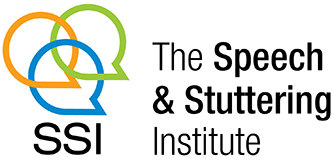“My child doesn’t want to do speech practice with me at home! Why does he work at speech therapy but not at home?” Many parents report this experience when they try to follow through with homework from speech therapy.
Speech-Language Pathologists use a number of strategies to support children’s participation in therapy activities. You can try some of the ideas below at home to see if they help. You may also discover additional strategies for working with your child to share with your SLP.
A clear workspace
SLPs usually bring out one activity at a time on an otherwise clear table or floor area. This helps children to maintain their focus on the task. Without any distractions, each activity can be completed within a child’s attention span. However, when distractions are present, practice can take longer because of the time spent redirecting the child’s attention back to completing the speech activity. If an activity can’t be completed within your child’s attention span, she may start to resist speech practice activities altogether.
At home: Create a clear workspace. Distractions to avoid may include a cluttered table, a noisy room (people talking or a television in the background), a phone buzzing, or a nearby sibling doing something that looks like more fun.
Enthusiasm
SLPs know that when an adult shows excitement about an activity, children do too.
At home: Think about your facial expression when you say it’s time for speech homework: smile! Think about the language you use: there’s a big difference between “we have to do our work now” and “we get to play a speech game now!”
More praise than correction
When a child is practicing a speech skill in therapy, SLPs want to help them get it right. Praise for a correct new sound, word, or phrase is easy: “Good job!” “You got it!” “I heard your new sound!” But how does the SLP help when a child makes an error? One approach is to minimize errors by working at a level that allows for more praise than correction – don’t make things so hard that the child rarely gets it right. This keeps speech practice from becoming discouraging, and this is the way that speech therapy is often planned by therapists. However, SLPs also have to challenge your children to help them make progress, and they have to give clear feedback so children don’t think they got something right when they didn’t. Watch how the SLP handles errors: she may ask for one more try, then move on. Or, she may provide support for an improved production, such saying it together, giving another model for the child to imitate, giving a reminder of how to produce the sound correctly, or providing a touch cue. It’s important to give the child the chance to get it right, but not to get stuck on errors.
At home: Offer praise for correct turns and give support after errors, then move on; try not to make practice discouraging by having your child repeat himself over and over until he corrects his error by himself.
A clear endpoint
SLPs help children to see how long an activity will take. If it looks like practice may take “forever,” a child may not even want to get started. However, when the materials are laid out in a way that makes the endpoint of the activity obvious, getting started is easier.
At home: Make it clear that speech practice has a specific start and end. For example, you can lay out 10 clothespins to drop in a jar, or draw 10 circles to check off with a marker. This shows your child clearly that she needs to try 10 times. When the ten turns are taken, the activity is all done!
